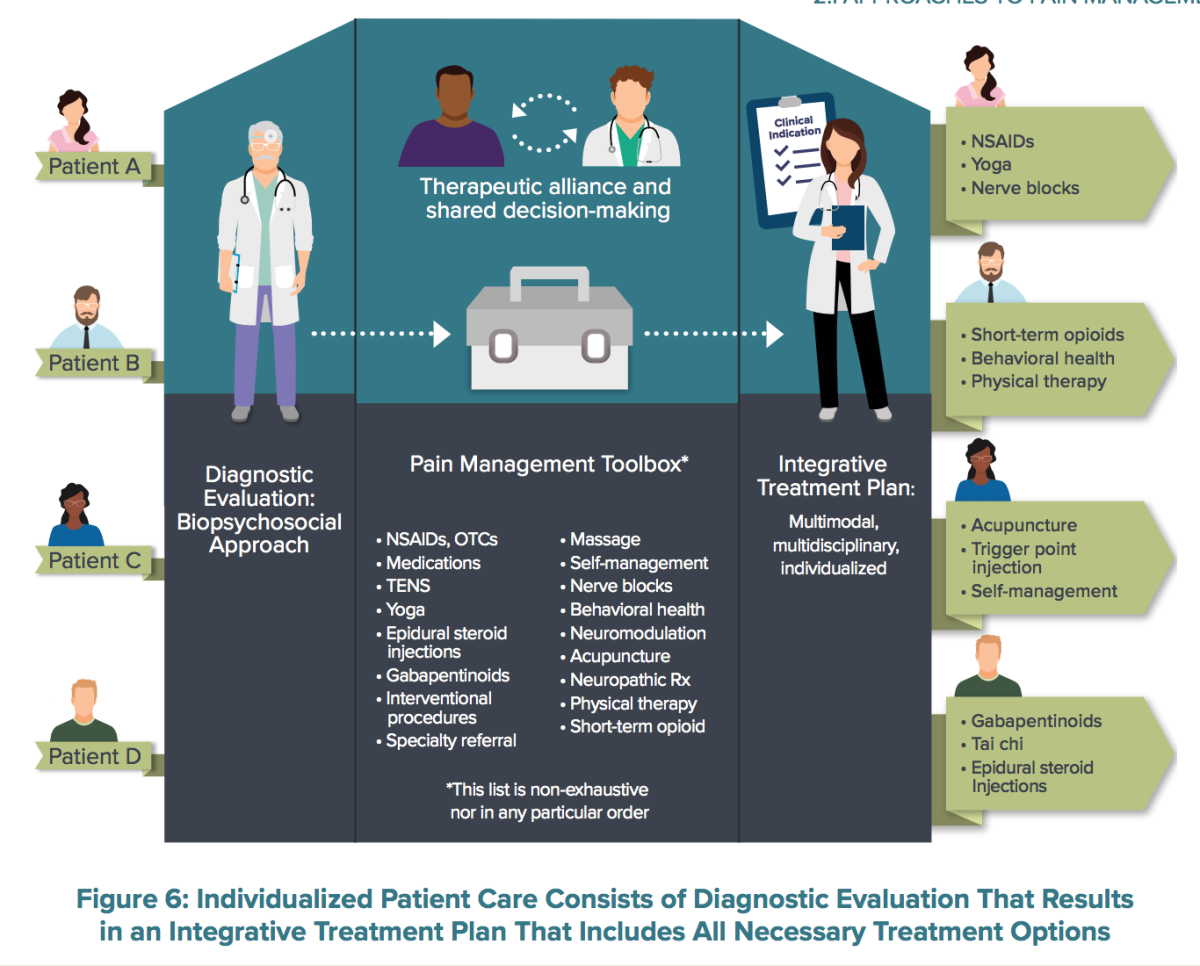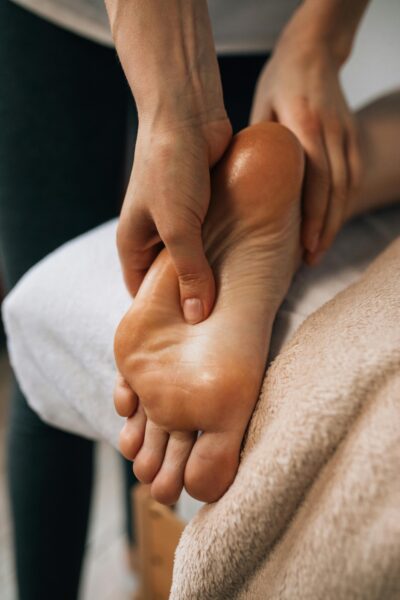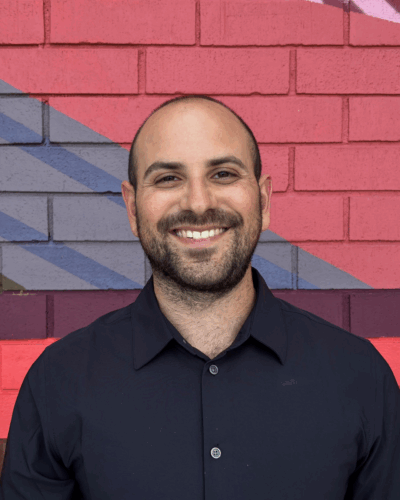“Almost two-thirds of Americans have been prescribed an opioid for pain issues, 49% report knowing someone who has been addicted to prescription opioids, and one in five Americans know someone whose opioid abuse led to their death.”
The CDC found in 2016 that twenty percent of adults reported having chronic pain. The rate of chronic pain in the military is alarmingly higher with a range from twenty-five to eighty-two percent among active duty and veteran populations, with an average of sixty-five percent of veterans reporting being in pain.
These statistics are alarming, scary and sad. As part of pain management there is increasing evidence that yoga and acupuncture should be considered and implemented therapies. Acupuncture and yoga are regularly being utilized in the military.
In May of this year the U.S. Department of Health and Human Services included in their Pain Management Best Practices report the use of acupuncture and yoga as part of “a collaborative, multimodal, multidisciplinary, patient-centered approach to treatment for various acute and chronic pain conditions to achieve optimal patient outcomes.”
Acupuncture and Yoga have many similarities; when used together, they inform one another and help to bring acupuncture patients and yoga students an increased awareness of how they feel in their body. Both center around the principle of promoting circulation in the body, via breath and bloodstream. In this way, they help the body to detoxify, decrease inflammation, reduce pain and improve overall health.
In the face of addictive medications, it is important to us at the Acupuncture Clinic of Boulder to be an advocate for our patients and offer non-pharmacological treatments like yoga and acupuncture. If we can help a patient manage their pain, reduce medications, or avoid medication all together we are helping people on their road to recovery. Acupuncture can also help manage the side effects of medications such as constipation, anxiety, nausea, vomiting, and depression. Yoga is a fantastic compliment for pain management. For instance, Pavanamuktasana “wind-removing pose”, requires a participant to lay on their back and bring one leg to their chest at a time. It effectively massages the intestines as well as stimulates the internal organs of the digestive system, thus releasing the trapped gases as well as improving digestion. It helps to increase blood circulation in the pelvic region as well as various internal organs. It also helps to stretch the low back. This provides stress relief, pain management, and a reduction in constipation.
Acupuncture can be a starting place to reduce acute or chronic pain. One mechanism by which acupuncture works is to help the body to produce and release endogenous opioids, which act as natural painkillers in the body. Acupuncture also activates opioid receptors in the brain, which can help patients lower medication dosages and help medications be more effective. Acupuncture can also be effective as a means to alleviate withdrawal symptoms for patients who are weaning off of their medications.
For extra support with pain management, yoga is a helpful adjunct therapy. A new study from the VA San Diego Healthcare System and the University of California, San Diego found that: “veterans with chronic low back pain responded well enough to twice-weekly yoga class to cut back on or eliminate the use of opioid pain medications. The study followed 150 military veterans with an average of fifteen years of chronic low back pain.”
Not only is yoga helpful to reduce pain, it also helps improve cardiovascular health and improve muscular health and flexibility. Some practitioners of yoga find over time that their practice evolves from being solely for the physical benefits, but they also report experiencing a beneficial change of mindset as well. One study on PTSD for Veterans showed that benefits identified included finding mental stillness, body awareness, and social connection through their yoga practice. Another study showed that yoga helps reduce stress, anxiety and alleviate depression.
While studies are now showing the benefits of acupuncture and yoga; these forms of therapy have been alive and developing for over 3,000 years. Both require a commitment on behalf of the patient; they can be quickly effective, but require multiple sessions to create lasting changes in the body.
Sarah Powers, the creator of a style of yoga called “Insight Yoga” is famous for weaving Chinese Medicine theory into her yoga classes. She says that “Yoga can be understood as a set of behaviors that develops a holistic experience of the body, heart and mind.” The same can be said of acupuncture; both of these practices are intended to bring the body and mind back into a state of balance. Yoga and acupuncture encourage one to relax, slow down the breath and focus on the present; shifting the balance from the sympathetic nervous system and fight-or-flight response, to the parasympathetic system, the relaxation response.
If you or a loved one is suffering from pain, or feeling out of balance in any aspect of your health, you may want to consider yoga or acupuncture as part of a self-care routine. There are yoga classes for every level of student as well as many different types of acupuncture treatments available. If you are feeling off balance, or need support we would be happy to consult and guide you to what might be an appropriate yoga class or specific acupuncture treatment for you.
“Health is a state of body. Wellness is a state of being.” — J.S

Written by Cailey Halloran, L.Ac., Dipl. O.M. Edited by Erin Pass, L.Ac., Dipl. C.H.
Addressing the Opioid Crisis through Non-Pharmacological Acupuncture Interventions https://www.nccaom.org/wp-content/uploads/pdf/NCCAOM_Toolkit_Whitepaper_Opoid_Crisis.pdf
Miller, Gaylord, Brintz, et all. Medicines (Basel). 2017 Sep; 4(3): 64. 2017 Sep 1. doi: 10.3390/medicines4030064. Literature Review of Research on Chronic Pain and Yoga in Military Populations
Department of Health and Human Services USA. PAIN MANAGEMENT BEST PRACTICES INTER-AGENCY TASK FORCE REPORT Updates, Gaps, Inconsistencies, and Recommendations. https://www.hhs.gov/sites/default/files/pmtf-final-report-2019-05-23.pdf x
Zhang, R, Lao L, Ren K, Berman BM. Mechanisms of Acupuncture-Electroacupuncture on Persistent Pain. Anesthesiology, 2014; 120(2): 482-503.
Grossel, Lin Kiu, Chang, et all. American Journal of Preventative Medicine. November 2017 Volume 53, Issue 5, Pages 599–608. Yoga for Military Veterans with Chronic Low Back Pain: A Randomized Clinical Trial.
Woodyard. Int J Yoga. 2011 Jul-Dec; 4(2): 49–54.Exploring the therapeutic effects of yoga and its ability to increase quality of life. https://www.ncbi.nlm.nih.gov/pmc/articles/PMC3193654/
Int J Yoga Therap. 2018 Nov;28(1):63-70. doi: 10.17761/2018-00020. Epub 2018 Aug 17.
A Qualitative Study Exploring Yoga in Veterans with PTSD Symptoms.
Cowen, Adams. J of Bodywork and Movement Therapies. 2005 Jul Vol 9, Issue 3: 211–219. Physical and perceptual benefits of yoga asana practice: results of a pilot study. https://doi.org/10.1016/j.jbmt.2004.08.001
https://www.sciencedirect.com/science/article/pii/S0165183899000909



